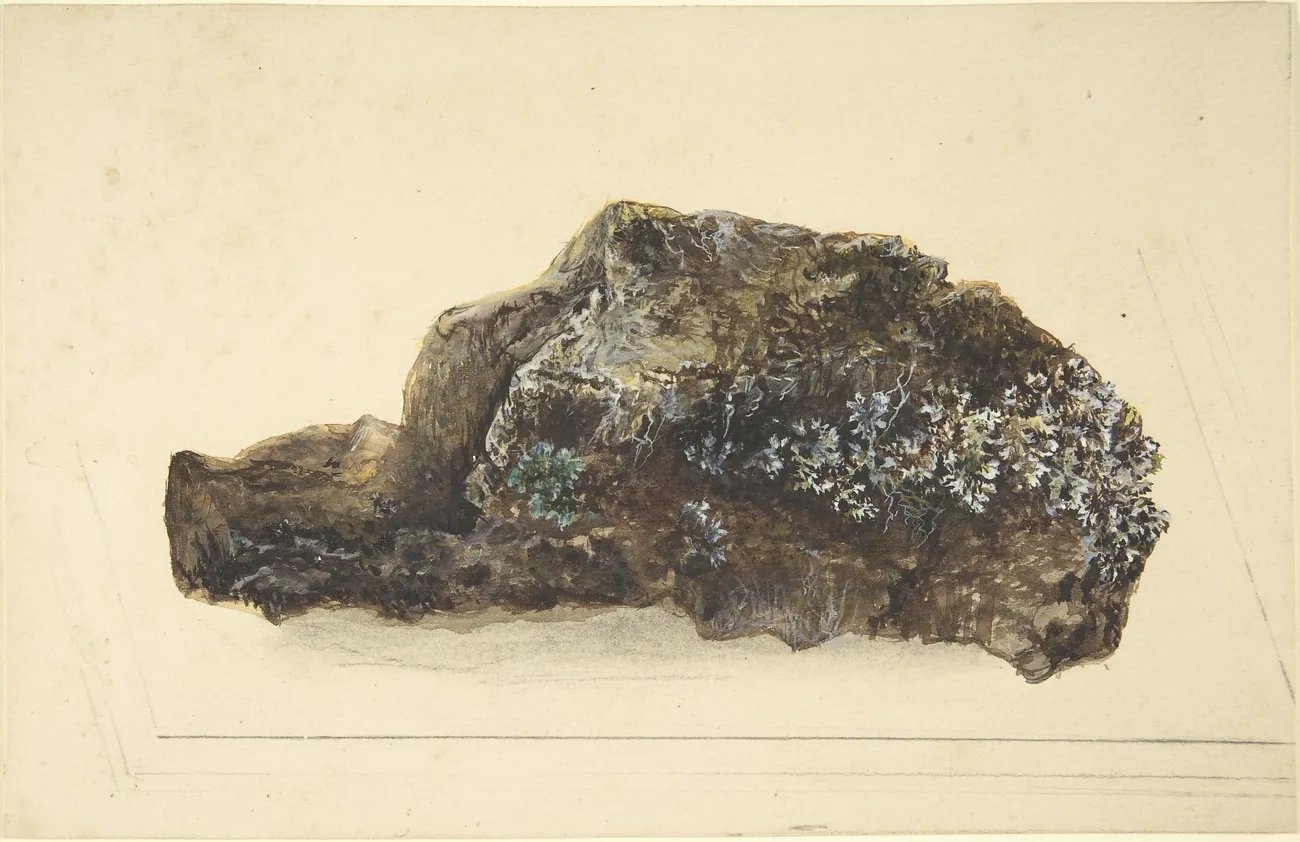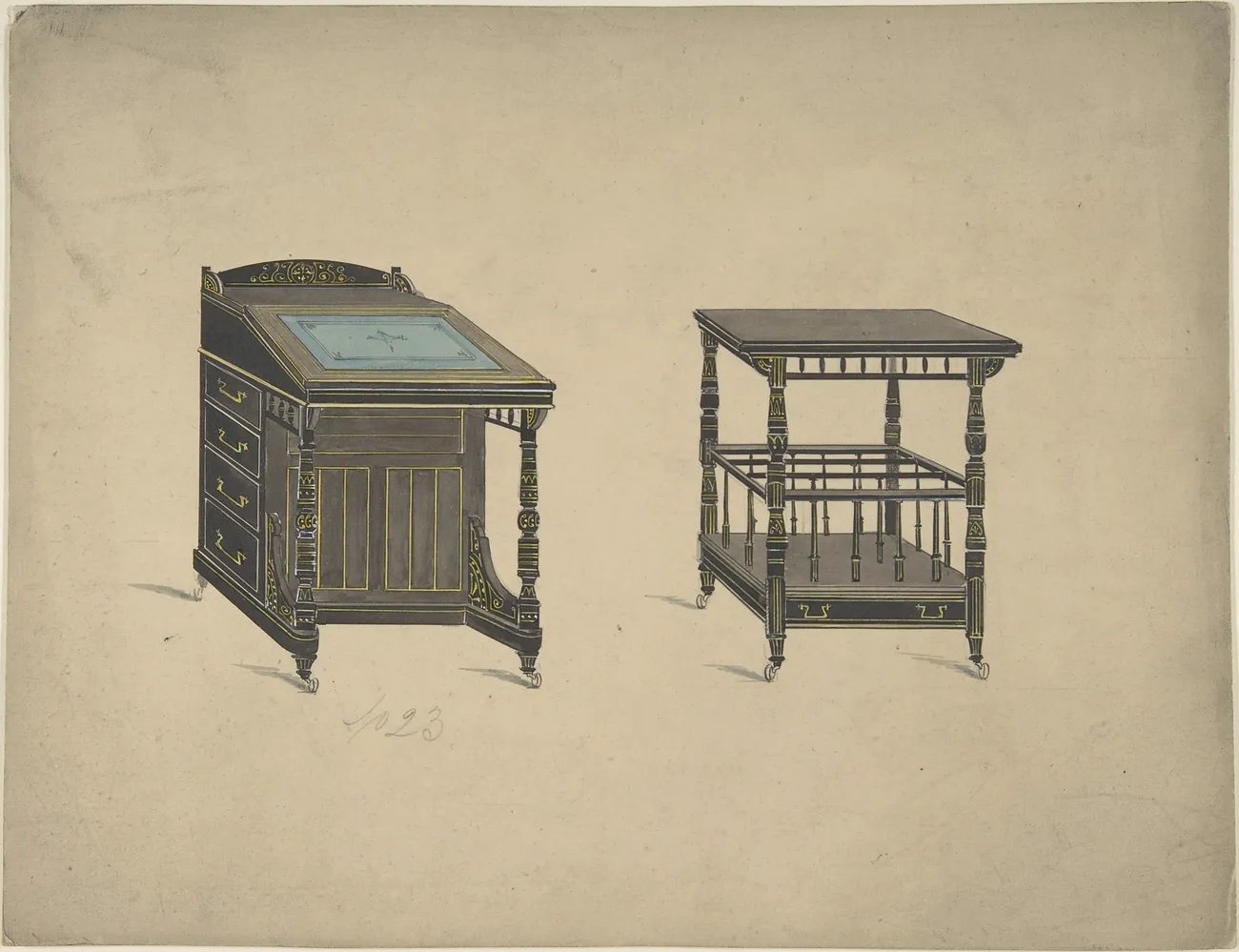Wehret den Anfängen - Fighting the Far-Right in Germany
Saoirse ní Fhlannagáin
During the last few months, Ireland has seen a rise in anti-refugee sentiment. Far-right groups have organised protests around the country, many in front of emergency accommodation for refugees. In other European countries like Poland, Hungary and Austria, this is a longstanding sentiment.
Germany has seen a rise of far-right, racist and often outright fascist movements, heightened during the ‘Refugee Crisis’ (approximately 2014-2017) when there was a sudden and large influx of refugees into the country.
The beliefs and strategies of far-right groups in Germany and Ireland largely overlap. But Ireland can learn from the response in Germany, to better resist the spread of racism here.
Anti-refugee sentiment in Germany
Despite far-right ideology always having been a part of European politics, far-right parties only started seeing a resurgence in the 1980s.[1] In the 1990s this mainly took the form of anti-refugee sentiment. In Germany, the early ‘90s saw rising immigration, unemployment and economic stagnation, providing a fertile ground for the rhetoric of the extreme right. The rise of far-right violence led to a ban of many far-right organisations.[1] They, in turn, went underground and organised locally and informally, often in small groups of 10-30 people, making it difficult for the German government to track their activity.[1]
““Far-right groups were able to exploit the failure of the German Government in handling the situation and stoked anti-refugee sentiment.””
By the 2000s, with a lack of public exposure, they appeared to become insignificant and fringe. This illusion was shattered in November 2011 in the wake of a bank robbery that went wrong. The bodies of the two men were found after they killed themselves after the bank robbery. The following investigation revealed that the two men had been part of the National Socialist Underground, murdering immigrants in Germany over a period of seven years (2000-2007).[2] The aftermath and the court proceedings revealed a systemic failure of the state in not registering their murders as hate crimes. During the trial it was also revealed that members of the domestic security agency had been aware of the homicides and had not shared information with the police.[3]
From 2014 to 2016, Germany saw a large influx of refugees into the country. In 2015 alone 890,000 refugees arrived in the country, mainly fleeing from war-torn countries like Syria or Afghanistan.[4] Far-right groups were able to exploit the failure of the German Government in handling the situation and stoked anti-refugee sentiment. New far-right groups were founded and their politics saw an increase in support – the most prominent were the AfD (Alternative für Deutschland/Alternative for Germany), PEGIDA (Patriotische Europäer gegen die Islamisierung the Abendlandes/Patriotic Europeans Against the Islamisation of the Occident) and the IBD (Identitäre Bewegung Deutschlands, Identitarian Movement Germany).
In 2013, AfD was founded with a primary focus on criticising the Euro currency. After a dismal display in the 2013 elections, internal power struggles led to a shift to the right and any moderate members left.[5] The AfD shifted focus to immigration issues, stoking fear over ‘unaccompanied young men’ coming into the country, eroding the welfare system, committing crime, and presenting a danger to German culture and identity. By the 2017 elections, the AfD became the third largest party in parliament.[6]
PEGIDA had a similar focus to the AfD. In October 2014 the group started weekly rallies in the city of Dresden, drawing large crowds. Four months later, 25,000 people were attending the rallies and similar groups formed in other cities, though they weren’t as successful. Soon, the focus of the weekly events became a strong distrust of the political ‘elite’ and a rejection of religious diversity (especially Islam).[7]
““they carry an ideological hypocrisy: they claim to defend women’s rights and gender equality but hold up traditional gender roles and the heterosexual family as the universal ideal.””
The far-right rhetoric around immigration has followed a similar pattern in Ireland: immigrants are dangerous and immigration is destroying the native culture and eroding national identity. These organisations claim to be protecting women and children from violent immigrants. But they carry an ideological hypocrisy: they claim to defend women’s rights and gender equality but hold up traditional gender roles and the heterosexual family as the universal ideal. They are critical and often outright hostile towards LGBTQ+ rights, reproductive rights, gender-neutral language or even campaigns for equal pay. When it comes to sexism, sexual harassment or domestic violence by white men, the far-right is notably quiet.
Key to their propaganda is the use of apocalyptic language and spreading misinformation, including the false notion that asylum seekers commit more crime and are abusing the welfare system at the expense of ‘native Germans’.[8] The far-right often speaks of an ‘imminent invasion’, ‘destruction of culture’, or ‘hordes of unvetted young male immigrants’ and endorses vigilantism.[9] This rhetoric seeks to appeal to the emotions of people that never had much interest in politics before.[6] They also peddle conspiracy theories, like ‘The Great Replacement’ (a theory claiming that there is a plan to replace Europeans with other nationalities by means of immigration). All of this led to a strong anti-scientific sentiment and distrust in established media.
This was the same sentiment that provided fertile ground for other conspiracy theories that the far-right were able to exploit. Anti-vaccination and anti-lockdown movements made room for far-right movements to grow during the pandemic.
If all of this seems familiar, that’s because it is. These sentiments have become much more public and visible during the last few months in Ireland as well.
Similarities to Ireland
For many years, the far-right in Ireland has been practically invisible. Many hate crimes were never registered as such, due to lack of formal laws and procedures. NGOs suspect that the real figure is about three times higher than official figures.[10] Many forms of racism have been normalised and accepted in Irish society, such as racism against Roma and Traveller communities.[10]
““Far-right groups played a central role in organising anti-lockdown and anti-vaccine protests and were able to use the pandemic and the lockdowns to recruit new members.””
Most far-right groups existed on the fringes of society and had little to no contact with each other. Many of them only became visible around divisive issues, like abortion or equal marriage rights. Among the groups that have been in Ireland for a longer time are some ‘Traditional Catholic’ communities, such as SSPX (Society of St. Pius X) or FSSP (Priestly Fraternity of St. Peter) – most other groups only formed in the 2010s.[11]
The pandemic sparked a rise in far-right sentiments and increased the visibility of far-right groups. Many anti-lockdown and anti-vaccinations activists were deplatformed by mainstream social media, similar to far-right agitators and conspiracy theorists. As a result, many far-right groups migrated to platforms like Telegram, with less content moderation and more anonymity. In 2020 alone there were 60,377 messages posted in 34 Irish far-right channels, compared to just over 800 messages in 2019.[12] Far-right groups played a central role in organising anti-lockdown and anti-vaccine protests and were able to use the pandemic and the lockdowns to recruit new members.[12]
In 2022, the dramatic exacerbation of the cost of living and housing crises threatened the material existence of many families. At the same time, there was an influx of refugees due to the Ukraine war – 70,000 Ukrainian refugees and a record number of 13,319 asylum seekers from other countries arrived in Ireland in 2022.[13] The government’s sheer incompetence in dealing with the emerging issues left a wide gap for the far-right to capitalise on people’s fears.[13]
Far-right content spread on social media. Towards the end of 2022, this came to a head with the protests in East Wall against refugees being temporarily housed in an empty office block. The East Wall protests produced mobilisations in other places around the country.[14] At the start of this year, there were anti-refugee protests almost every day, usually with the same prominent far-right figures organising them. Despite this, the protests were rarely attended by more than 100 people, though their nature grew increasingly violent. The talking points of the German far-right began to echo in Ireland.
Again, they claimed that there is no room for refugees in Ireland and that refugees are going to erode Irish culture. The Great Replacement conspiracy theory was repeated over and over on Facebook and Twitter. The far-right used the arrival of refugees as a scapegoat for the housing crisis – a topic that affects nearly every household in Ireland – and let the government that is responsible for this housing crisis off the hook. They ignore the fact that there has been a housing crisis long before any substantial amount of refugees arrived in Ireland.
Misinformation is spread that refugees are getting better treatment than the Irish, or that all of them are single, violent, young men. As in Germany, the far right in Ireland claims that Irish women need to be protected from immigrants and that they’re not safe in their own country anymore. However, outside of this supposed concern for women’s wellbeing, the far-right are very much aligned with the Catholic church, opposing reproductive rights and promoting traditional gender roles.
In addition to social media, news sites are emerging that champion right-wing ideology. The far-right absurdly paints the current government as a left-wing government of elites, while the government panders to far-right hate politics. And left-wing activists are targeted with increasing aggression. All this rhetoric has led to nationwide escalating right-wing violence. Far-right agitators have been riling up their followers, especially against refugees, where they pushed people to “[g]o to where they live and burn them out”.[9]
The far-right in Ireland also uses apocalyptic language. Telegram groups are full of terms like ‘invasion’, ‘unvetted immigrants’, ‘male immigrants of military age’ or ‘tyrannical government’. They label the housing of refugees as ‘another plantation’ – an analogy that has nothing to do with reality and harkens back to the Great Replacement conspiracy.[15] Patriotic sentiments are being stirred by liberal use of the Irish flag – which is ironic, considering the many links to the British far-right that prominent figures in the Irish far-right have.
Solidarity and support
In contrast with the history and actions of the far-right outlined above, there has also been a show of solidarity for refugees from ordinary people. In Germany, local volunteer groups formed quickly with a goal to show support as well as provide practical help. In big cities, this often took the form of setting up stalls at train stations, collecting arriving refugees and providing them with a translator, information for next steps, and necessities like food and clothing.[16, 17]
As the numbers of refugees arriving slowed down, the volunteer groups shifted to more long-term support, like language lessons, accompanying the refugees on visits to authorities or doctors, and free legal aid.[16] They also organised, often alongside local community groups, social activities and gatherings to help integrate the refugees into the local community.[16]
The local support groups were mainly grassroots organisations – created by active individuals who saw a need to act where the state had failed. The government had failed to provide the necessary infrastructure for taking in so many refugees, prompting communities to organise among themselves. Despite the continued intimidation and attacks from the far-right on refugees and volunteers, the groups saw continual high engagement, with nearly 11% of Germans over the age of 14 volunteering to help refugees in autumn 2015.[16]
Importantly, in Germany, this also led to a wave of political organising. There was a successful self-organisation of active citizens, many of whom had never organised in such a way before. In bigger cities, different groups organised protests to counter the far-right and to advocate for migrants’ rights. Longstanding politically active groups quickly saw new subgroups of volunteers organising protests against racism and in favour of migrant and refugee rights.
Many volunteers were unfamiliar with these issues and were learning for the first time the extent to which foreign-born people face structural violence and discrimination. This led to a much higher awareness of institutional racism, as well as the brutal border policies of the EU in the Mediterranean. The pro-refugee protests often clashed violently with the racist protests, and while this could have easily discouraged people from participating, these experiences often served to radicalise people that had previously been indifferent to politics despite.[18] In many cases refugees also organised themselves to protest against deportations and the German asylum policies.[19]
The mingling of locals and refugees served to bring communities closer together.[20] Local volunteers and organisers, including people with no experience or history of migration, became more culturally open and aware. The evidence indicates that the engagement of those initiatives reduced the ground for agitation from the far-right.
The experiences of volunteers at the time served to politicise them and demonstrated the power of grassroots organising. It also shed light on the injustice of the capitalist system, specifically concerning migration and asylum policy. It was often the first time volunteers faced the vile hatred and bigotry of the so-called ‘concerned citizen’. This was my experience – I got involved in providing direct aid to refugees in Germany then became politically active.
““The refugee support groups that have been set up are a show of solidarity, but similarly a symbol of government failure.””
What we can learn
Solidarity movements where direct aid goes hand in hand with political agitation provide a great avenue for people to get involved in politics and to get organised for a mass movement. All over Ireland, such local groups in support of refugees have been set up in the wake of the rise of the far-right. What lessons can we take from the events in Germany?
Firstly, direct aid, like providing food and clothing for refugees or collecting donations and delivering them to emergency accommodation, can often be a good start and great expression of solidarity. Activists with the right qualifications can also provide needed medical or legal aid.
Supporting refugees as they integrate into the local communities can help them feel more secure in their new environment, as well as bring the local community around them. Studies from Germany show that this can mitigate or even prevent the far-right taking hold in communities.[16] One way to achieve this is by organising social meet-ups, integrating community groups, or setting up encounter cafes that facilitate interaction with the locals.
But we don’t want to fall into the trap of trying to do the government’s job for them. All of these provisions are the responsibilities of the state. The refugee support groups that have been set up are a show of solidarity, but similarly a symbol of government failure. We must not cede any ground to far-right hate groups by allowing them to take over the streets, to fester in our communities and to recruit more people. We will have to show solidarity both in practical ways, as well as on the streets.
This is where political organising can be useful to point out who really is to blame for the current crises - the government upholding neoliberal capitalism, because they profit from it; not the refugees and immigrants looking for safety and a better life in Ireland. It is important to organise politically to point out to the government how they are failing not only asylum seekers, but also the Irish working class. An example for this are the recent Cost of Living protests, that mobilised thousands throughout the past year, or the recent struggle to extend the eviction ban.
Conclusion
The far-right hasn’t been able to gain numbers in Ireland in the past, but they used the pandemic to recruit people and are now able to mobilise on a small scale. The same was true in Germany for a long time, but the far-right managed to mobilise and grew their numbers rapidly. We have to make sure the same doesn’t happen here. The Ireland for All protest on the 18th of February was a great start in mobilising wide layers of the population and in showing solidarity, but we have to continue building on that.
““ There is a need not just to counter-protest the far-right, but also to mobilise against the current government and against capitalism, in order to provide a real alternative for the working class “”
The far-right has nothing to offer the working class. Their simple answers are built on hate and misinformation. The housing crisis has been caused by greed and profiteering, not by refugees. The far-right has never been involved in housing campaigns or campaigns for equal rights. On the other hand, the Irish left have been organising housing protests and cost of living protests long before the right started to try and capitalise on those issues. There is a need not just to counter-protest the far-right, but also to mobilise against the current government and against capitalism, in order to provide a real alternative for the working class and not to cede any ground to the right when it comes to social and economical issues.
Direct aid can be a powerful avenue in getting people involved in mass movements, but we should not solely focus on direct aid - we also need to focus on building the mass movement we would like to see. Political activists can reach out and work together with community support groups to get them involved in their campaigns and help them to organise politically as well.
People Before Profit are right to call for everyone to stand in solidarity with asylum seekers and migrants and in opposition of the far-right. If we don’t oppose them while they’re still small we are putting refugees and migrants in real danger – and they won’t stay the only target of the far-right. Socialists, trade unionists, members of the LGBTQ+ community, the Travelling Community and many others will be next.
In Germany there is a saying that is often associated with resistance to national socialism and fascist ideas: ‘Wehret den Anfängen!’ It can be translated as ‘nip it in the bud’, but a more literal translation would be ‘Resist the Beginnings!’ That is what we need to do now – resist the beginnings of the far-right becoming a mainstream force in our society. They do not stand for an equal, just and democratic society. We need to stop them from gaining a foothold.
Article originally published in Issue 10 of Rupture Magazine. Subscribe or purchase previous issues here.
Notes
1. Öner, Selcen. “Different Manifestations of the Rise of Far-Right in European Politics: The Cases of Germany and Austria.” Marmara Üniversitesi Avrupa Topluluğu Enstitüsü Avrupa Araştırmaları Dergisi 22, no. 2 (2015): 85–106. https://doi.org/10.29228/mjes.86.
2. Abendblatt.de. “Dokumentierten Rechtsextreme Täter Ihre Hinrichtungen?” Ermittlungen zu Döner-Morden. Hamburger Abendblatt December 3, 2022. https://www.abendblatt.de/politik/deutschland/article108169795/Dokumentierten-rechtsextreme-Taeter-ihre-Hinrichtungen.html.
3. Spiegel, Der. “The World from Berlin: 'the Neo-Nazi Killers Were among Us'.” Der Spiegel. Der Spiegel, November 15, 2011. https://www.spiegel.de/international/germany/the-world-from-berlin-the-neo-nazi-killers-were-among-us-a-797948.html.
4. Jäckle, Sebastian, and Pascal D König. “Threatening Events and Anti-Refugee Violence: An Empirical Analysis in the Wake of the Refugee Crisis during the Years 2015 and 2016 in Germany.” European Sociological Review 34, no. 6 (2018): 728–43. https://doi.org/10.1093/esr/jcy038.
5. Berning, Carl C. "Alternative für Deutschland (AfD)–Germany’s new radical right-wing populist party." ifo DICE Report 15, no. 4 (2017): 16-19.
6. Ahmed, Reem, and Daniela Pisoiu. "Uniting the far right: how the far-right extremist, New Right, and populist frames overlap on Twitter–a German case study." European societies 23, no. 2 (2021): 232-254.
7. Virchow, Fabian. "PEGIDA: Understanding the emergence and essence of nativist protest in Dresden." Journal of Intercultural Studies 37, no. 6 (2016): 541-555.
8. Fangen, Katrine, and Lisanne Lichtenberg. "Gender and family rhetoric on the German far right." Patterns of Prejudice 55, no. 1 (2021): 71-93.
9. Murray, Paul Hosford and Sean. “Threats, Violence and Swastika Flags. What's Happened to Ireland of the Welcomes?” Irish Examiner, February 5, 2023. https://www.irishexaminer.com/news/spotlight/arid-41063300.html.
10. Marinescu, Diana Georgiana. "Examining the right-wing extremism in the EU: a comparison between the origins and development o far-right extremism in Ireland, Spain, and Romania." (2021).
11. “Ireland's Far-Right Groups Influenced by American Far-Right Extremists, New Report Finds.” IrishCentral.com, August 23, 2022. https://www.irishcentral.com/news/ireland-far-right-hate-extremist-groups.
12. Curley, Cliona, Eugenia Siapera, and Joe Carthy. "Covid-19 Protesters and the Far Right on Telegram: Co-Conspirators or Accidental Bedfellows?." Social Media+ Society 8, no. 4 (2022): 20563051221129187.
13. “Ireland Sees Record Number of Asylum Seekers in 2022.” DublinLive, January 3, 2023. https://www.dublinlive.ie/news/ireland-sets-record-number-asylum-25883154.
14. Eoghan Moloney, Ralph Riegel and Allison Bray. “Around 100 People Gather in East Wall to Protest over Refugee Centre.” independent. Independent.ie, January 12, 2023. https://www.independent.ie/news/around-100-people-gather-in-east-wall-to-protest-over-refugee-centre-42282420.html.
15. Glennon, Seána. "The anti-mask movement and the rise of the right in Ireland: What does it mean for our democracy." IACL-IADC Blog (2021).
16. Hamann, Ulrike, and Serhat Karakayali. "Practicing Willkommenskultur: migration and solidarity in Germany." Intersections 2, no. 4 (2016).
17. Rees, Jonas H., Yann PM Rees, Jens H. Hellmann, and Andreas Zick. "Climate of hate: Similar correlates of far right electoral support and right-wing hate crimes in Germany." Frontiers in psychology 10 (2019): 2328.
19. Visibilities and the Politics of Space: Refugee Activism in Berlin
20. Jäckle, Sebastian, and Pascal D. König. "Threatening events and anti-refugee violence: an empirical analysis in the wake of the refugee crisis during the years 2015 and 2016 in Germany." European Sociological Review 34, no. 6 (2018): 728-743.





